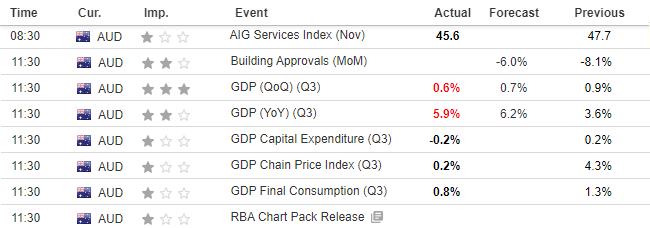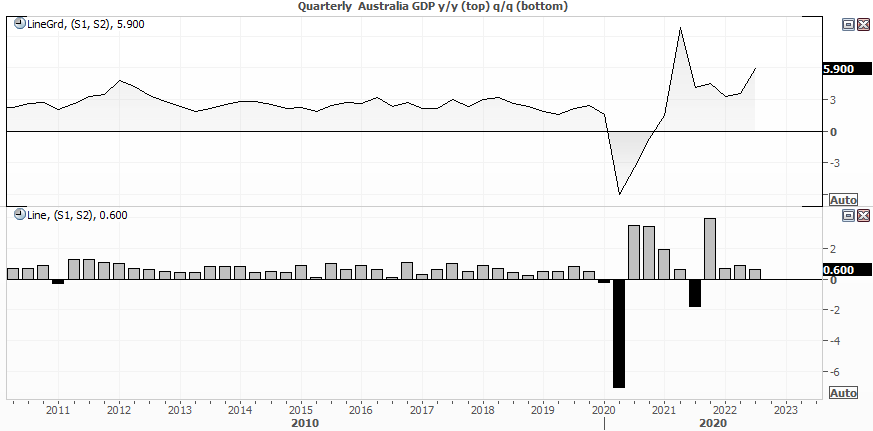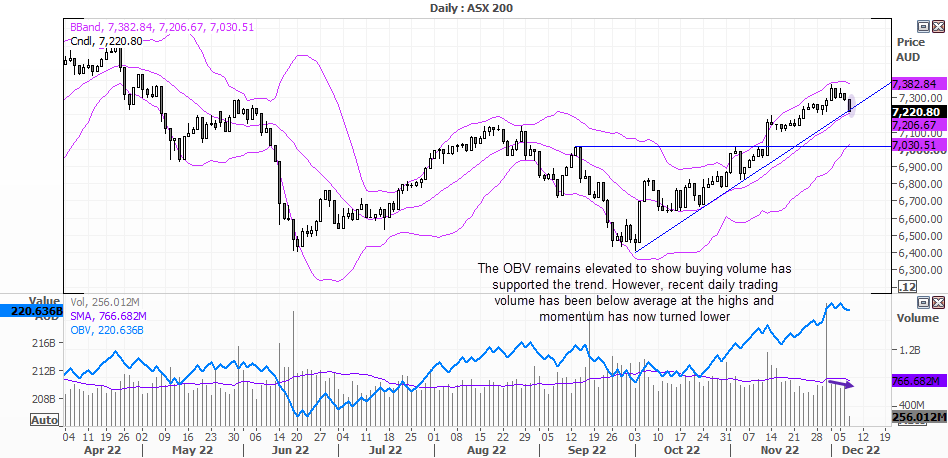

Australia’s GDP rose just 0.6% in Q3, beneath both the prior print of 0.9% and below the 0.7% expected. On one hand it is the fourth consecutive quarter of positive growth, on the other it is the weakest over the past year. Annual GDP rose 5.9% but below the 6.2% forecast, and it is the quarterly we pay closer attention to as it is a faster rate of change.
According to the RBA’s forecasts, GDP is expected to continue trending lower through to 2024 having recently revised them lower. And today’s figures back up that view, give or take a few percentage points - as do several recent data points for the Australian economy.
- Gross corporate profits slumped to -12.4% q/q in Q3
- Australia’s current account as in deficit for the first time in three years
- Services, manufacturing and construction PMI’s are all contracting, according to AIG
- The S&P global manufacturing PMI is expanding but at a slower pace, and services PMI has dragged the composite PMI to its fastest pace of contraction since January 2021

Household spending up, savings ratio down
If we delve behind the scenes of the headline figure, we see that the household savings ratio decreased to 6.9% from 8.3%. Ultimately high levels of inflation are eroding savings, and that is clearly not sustainable. At some point consumers will have to stop chasing higher prices. Yet for now they still are, with household spending rising 1.1% - transport services rose 13.9% and Hotels, cafes and restaurants rose 5.5%.
In a nutshell, Australia remains on track for a slowdown in 2023 and household spending is expected to soften as consumers run out of buying power and fixed-rate mortgages get switched to variable. The bigger question going forward is how quickly inflation might come down (if it does at all) or whether it remains defiantly sticky.
ASX 200 daily chart:

The RBA’s hawkish hike weighed on the ASX 200 yesterday, and the May high which propped the market up has finally gave way this morning as the ASX tracked Wall Street’s weak lead south. Concerns of a global recession weighed on sentiment and dragged the ASX with it. The lower trendline of the bullish channel currently propping the market up, but the fact the market opened at the high of the day and sits at the low seems a bit ominous, so perhaps we’ll see a break lower.
On balance volume (OBV) has moved higher with prices to show bullish buying power has driven it, the majority of daily trade volumes have been below average which undermines its strength somewhat. If we are to see volumes rise upon an bearish breakout, we'd be looking for a move down to the 7030 high.





